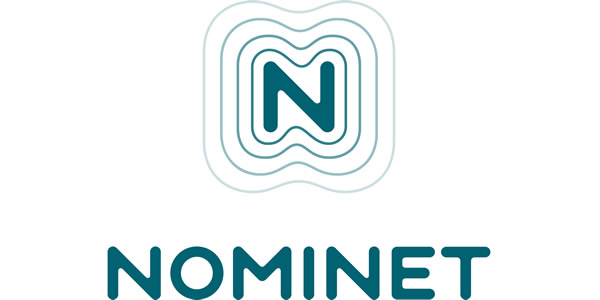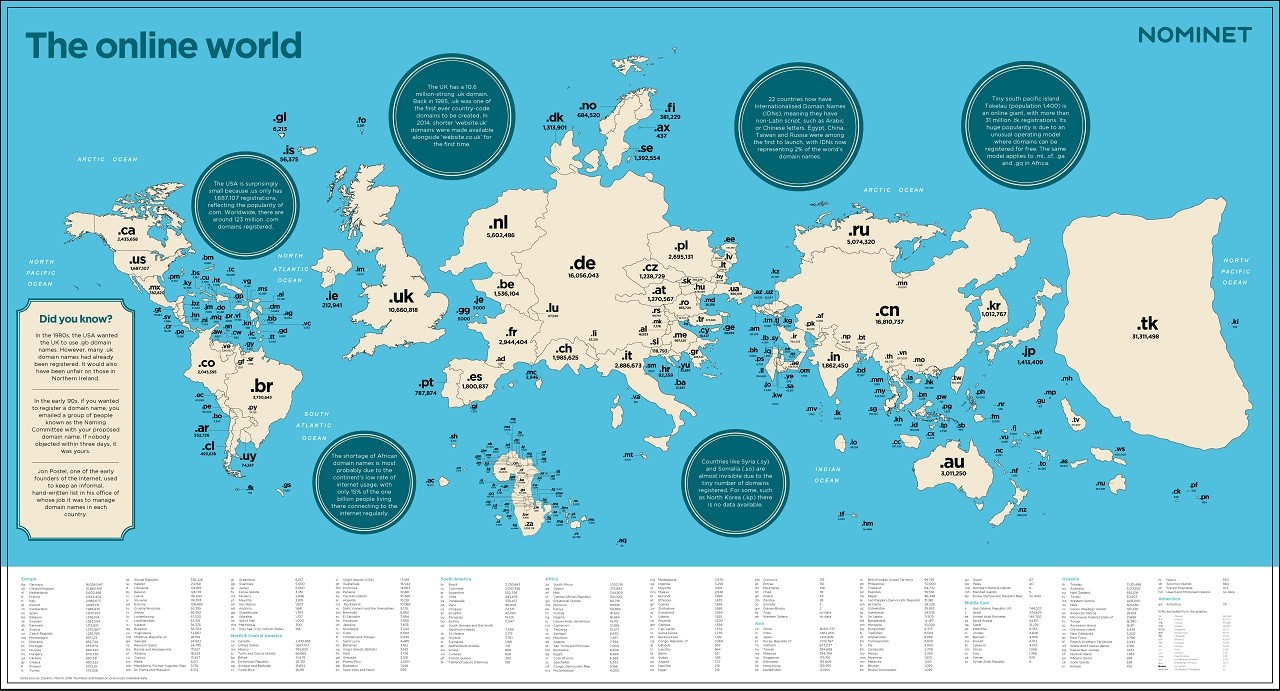Nominet published an infographic showing all the domain name extensions (ccTLDs) of the world.
Nominet has been looking for a way to visualise global internet use. The result is the map of the online world, an atlas redrawn according to the number of registrations within each country’s internet domain — whether .uk for the UK, .de for Germany, .cn for China, and so on.
The international nature of the internet was affirmed in the mid-eighties, when a system was agreed for allocating each country its own space online. Each would get a two-letter code within the Domain Name System, the address book of the internet. In 1985, the first three were delegated: .us for the USA, .uk for the UK, and .il for Israel.
‘Online Europe’ is so much larger than geographic Europe because of the high rates of internet adoption by countries in this region. The UK, for example, is only the 21st largest country in the world by population, and the 78th by area. But in terms of internet use, it’s right at the top of the table. In 2015, about four out of five UK adults accessed the internet daily, and more than three quarters bought goods or services online. With 10.6 million registrations, .uk is the world’s fourth largest country-code domain, and a new .uk is registered every 20 seconds.
The USA, on the other hand, is an anomaly. Despite having high levels of internet use, e-commerce and online innovation, there are comparatively few registrations under .us, its official country-code domain. Americans and American businesses tend to prefer .com, which at around 123 million registrations is the world’s most common domain.
In many other countries, the number of country-code domain registrations can be a useful indicator of internet adoption. But the low number of .us domains instead reflects American dominance in the internet’s formative years. A .com website may be assumed to be American by default, removing the need to specify.
Another anomaly is Tokelau. Yes, that huge, unfamiliar shape on the right hand side of the map is the tiny South Pacific island of Tokelau, population 1,400. There are 31 million registrations under Tokelau’s .tk, making it the world’s largest country-code domain. It’s almost as large as second and third place holders China (.cn) and Germany (.de) combined. The popularity of .tk is due to an unusual operating model, where domains can be registered for free and revenue comes from advertising. According to some reports, one-sixth of Tokelau’s GDP comes from .tk domains.
While the USA and Tokelau show there are exceptions at each end of the scale, Nominet’s map of the online world does seem to indicate some links between the size of a country’s internet domain, rate of internet adoption, and economic strength. Unfortunately, our map suggests that global inequality offline can often be mirrored by a lack of opportunity and representation in the online world. The continent of Africa is home to more than one billion people, yet on our map it’s much, much smaller than it should be.
 OnlineDomain.com Domain Name News & Opinions
OnlineDomain.com Domain Name News & Opinions




 OnlineDomain.com - © Copyright 2012-2025 - All Rights Reserved
OnlineDomain.com - © Copyright 2012-2025 - All Rights Reserved
France and Italy have surprisingly low registration numbers considering their populations and economic strength.
well, there are many reasons for that, anyway one of them is also that until platforms like Sedo will prevent prospect buyers from searching domains in languages other than English, all Latin languages countries will be penalized… Even this is a strategy
It’s too small to see it properly
You can click on the image and it will enlarge.